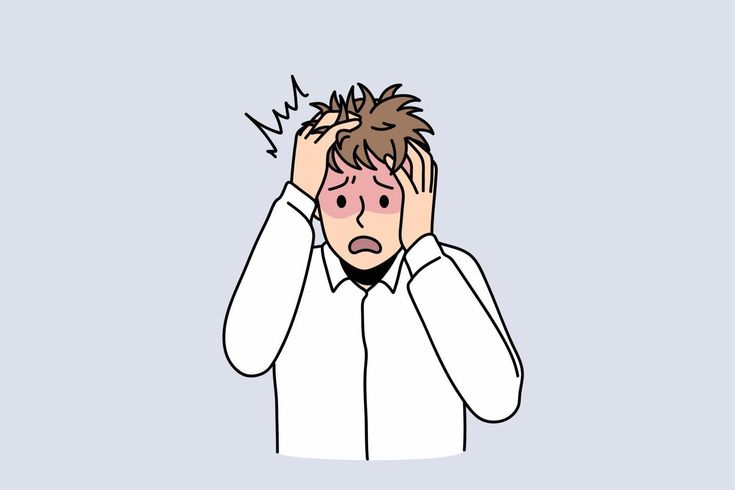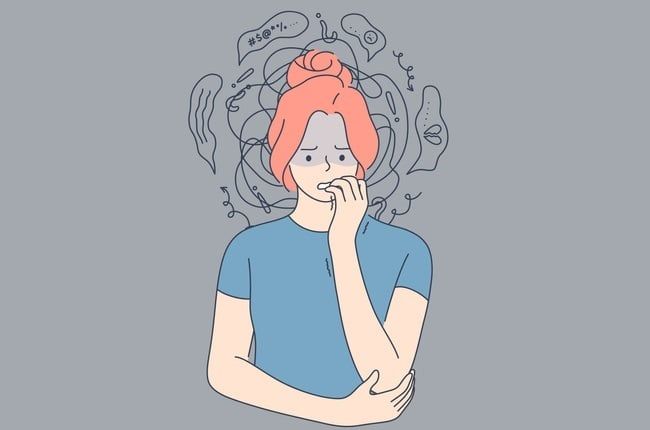Imagine yourself amid a whirlwind of thoughts, your heart racing as if seeking an escape, fists clenched tight, while your shoulders tense up as though bearing the weight of the world. A sip of water, is an attempt to calm the mind, yet anxiety lingers, revealing the raw reality of this emotional rollercoaster experienced by many of us. Anxiety, often discussed, is more than occasional worry. It’s a prevalent mental health concern characterized by persistent worry or heightened fear. It’s when this worry becomes overwhelming, impacting your daily life significantly. Approximately 1 in 13 people worldwide experience an anxiety disorder, according to WHO, emphasizing that if you’re facing this challenge, you’re truly not alone in this journey. Anxiety disorders encompass a range of conditions marked by prolonged sensations of fear, concern, and unease. These conditions can profoundly influence an individual’s everyday existence, altering their emotional state, cognitive processes, and behavioral patterns. Now, let’s explore the symptoms and various classifications of anxiety disorders.

SYMPTOMS:
1-Excessive Worry: Individuals with anxiety disorders face overwhelming concerns about different life aspects like health and relationships.
2-Physical Symptoms: Anxiety exhibits physical signs like increased heart rate, sweating, trembling, muscle tension, and restlessness.
3-Congaitive Patterns: Commonly, individuals experience persistent negative thoughts, concentration difficulties, and catastrophic thinking.
4-Avoidance Behaviors: People with anxiety disorders tend to avoid situations or places that trigger their anxiety, impacting their daily routines.
TYPES:
1-GAD generalized anxiety disorder involves persistent and excessive worry about various aspects of life. Individuals with GAD often find it challenging to control their worries, which may encompass diverse areas like health, family, work, or other routine matters. These worries persist for an extended period, often more than six months, and are disproportionate to the actual concern or threat.
2-Panic disorder is characterized by sudden and recurring episodes of intense fear or panic attacks. These attacks are often unexpected and can occur both in specific situations or seemingly out of the blue without any apparent trigger. Some triggers may include specific situations, such as crowded places, enclosed spaces, public speaking, or situations that have previously induced anxiety.
3-Social Anxiety Disorder, also known as social phobia, involves an intense fear of social situations and excessive self-consciousness in these settings. Individuals with this disorder experience overwhelming anxiety and distress in social interactions or when facing scrutiny or judgment from others.
DAILY LIFE CHALLENGES:
1-Interpersonal Relationships: Difficulty forming and maintaining connections due to fear of judgment.
2-Work/School: Reduced productivity, concentration, and academic performance.
3-Physical Health: Disrupted sleep, changes in appetite.
4-Daily Tasks: Avoidance of routine activities triggering anxiety like taking public transports, attending appointments.
5-Emotional Well-being: Emotional turmoil, constant worry.
6-Financial Challenges: Impulsive spending, job instability due to anxiety-related issues.
CAUSES:
Causes may include the following :
1-Genetics
2-Substance abuse
3-Brain chemistry
4-Environmental factors
5-Physical health conditions.

TREATMENTS: Seeking treatment for anxiety disorders is crucial for managing symptoms and improving overall well-being. Effective treatments, ranging from therapy to medication, aim to alleviate anxiety symptoms, enabling individuals to regain control of their lives.
1- Cognitive-Behavioral Therapy (CBT): This form of therapy helps individuals recognize and alter thought patterns contributing to anxiety. By challenging negative thoughts and behaviors, it aims to change how one reacts to anxiety-inducing situations.
2-Exposure Therapy: This involves gradually exposing individuals to feared situations in a controlled manner, allowing them to confront and manage their anxiety effectively.
3-Medication: Antidepressants, and benzodiazepines, such as lorazepam or diazepam, can provide short-term relief for acute anxiety symptoms.
BOTTOM LINES: Seeking treatment for anxiety is vital for managing symptoms and reclaiming control over life. Therapy options like CBT, exposure therapy, and mindfulness techniques, along with medications such as antidepressants, anti-anxiety meds, and beta-blockers, offer effective strategies to alleviate anxiety symptoms and enhance overall well-being. Finding the right treatment often involves collaboration with healthcare professionals for personalized care and improved quality of life.
